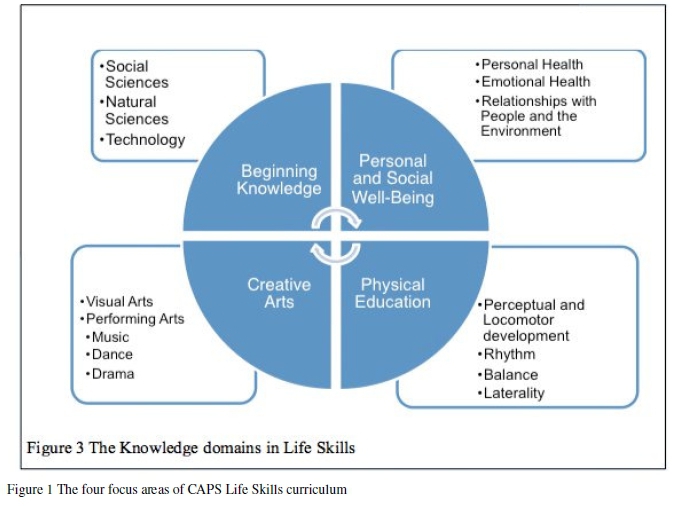Caps signify not just personal tastes but also affiliation with a community, tradition, culture, region, movement or union.
A captivating assortment of cap styles can be found in different countries, communities, each showcasing the cultures that moulded them.
These everyday accessories are not just fashion statement pieces but for many and in certain instances provide insight into the essence of local trends and their significance in the society.
The Yoruba Fila communicates culture
To the untrained eye, it might seem like just a cap, described as a piece of cloth stylishly perched atop a man’s head, but in Yoruba culture, the Fila has a deeper traditional meaning and significance than an object of fashion.
The Fila is a statement of identity, dignity and tradition that has endured for centuries, adapting subtly to modern fashion while retaining its ancestral weight.
Historically, Yoruba people, one of Nigeria’s largest ethnic groups, have always placed deep cultural value on appearance, especially in communal and ceremonial life. The cap or fila, usually worn by men as against the gele (headgear) by the women, is an essential piece of this visual language.
In pre-colonial times, it was a marker of status and maturity, often reserved for titled men, community elders and those of social distinction.
There were no mass-produced caps then. Each Fila was handcrafted, often from aso-oke, damask or velvet and styled to match the specific occasion.
The Abeti Aja, shaped like the flaps of a dog’s ears, is believed to have originated from warriors and hunters, symbolising alertness and courage. The Gobi, a more refined, cylindrical design, gained popularity among the elite Yoruba men in urban centres. Then there’s the Kufi or Taqiyah, which rounded shape reflects Islamic influence, especially in Ilorin, Ibadan, and parts of Osun.
In many Yoruba communities, appearing without a cap, especially before elders, at ceremonies or during prayers, is not just seen as a fashion miss but a sign of disrespect.
Even today, it is common to hear elders advise younger men, ‘Fi fila si ori e’ (put your cap on), not just to complete their attire but to carry themselves with honour.
Interestingly, the Fila has evolved into a subtle form of communication. In some circles, the way a man angles his cap can suggest his marital status. These include to the left for the married and right for the single, although this is now more folkloric than functional. More broadly, the Fila speaks of rootedness, a reminder that no matter how modern the world becomes, culture should sit firmly on one’s head.
Today, the Fila has found new life in both high fashion and everyday wear. From Lagos to London, it adorns the heads of grooms at weddings, politicians at rallies, and fashion-forward youths at concerts. Nigerian designers continue to reinvent its form, blending traditional motifs with contemporary fabrics. The social media too has played a role, turning what was once a regional style into a global symbol of Yoruba pride.
Yet, despite the evolving aesthetics, the essence remains unchanged. Wearing a Fila is still an act of cultural mindfulness, a nod to ancestors, a gesture of respect and a quiet assertion of identity in an increasingly homogenised world.
For the Yoruba man, the cap is never just an accessory, it is history, heritage and honour, all woven into cloth and worn with pride.
In his analysis, a historian, Professor Ibrahim Jawondo, traced the roots of the different Yoruba cap styles to notable individuals, including royalty and cultural custodians like babalawos (traditional priests).
He explained that styles such as Abeti Aja and Gobi emerged not only as elements of fashion but also as cultural symbols.
‘In fact, some traditionalists were known to carry charms tucked inside their caps, an act that often shaped the form and flow of the headgear, making it overlap or droop in distinctive ways,’ he said.
But these caps, according to him, are more than just accessories. They are communicative tools. The way a Yoruba cap is worn, whether tilted to the right, left, backward or sideways, sends different messages. It could reveal one’s marital status or signal fraternity, especially in groups like the Ogboni society, where specific cap orientations carry special meaning.
Despite their symbolic roots, Yoruba caps have taken on a broader role in contemporary society. Today, while they still reflect cultural identity, they have also become part of everyday fashion and celebration. Many people wear them as part of aso ebi (coordinated outfits for social events) often influenced by celebrity culture. As Prof Jawondo noted, some wear these caps without understanding their origins or meanings, yet the visual statement still reinforces pride in Yoruba heritage.
Speaking on the significance and socio-cultural value of the Fila, Daniel Opeyemi, a graduate of Yoruba Studies, explained that unmarried males wearing the Fila must be conscious of bending it to the right, while married men should tilt it the other way.
According to him, the Fila speaks elegance and adds a sense of refinement to the Yoruba male’s style and fashion. He added that no traditional outfit is complete without a fila to accompany it.
‘The Fila beautifies the head, which is a symbol of authority for a man in Yoruba culture; and it complements traditional attire during any occasion, be it marriage, naming ceremony, housewarming or any social celebration.
‘Whenever I put on the Fila, I feel proud to be showcasing my Yoruba heritage, which is unique to our language and people. Sometimes, when I wear the Targiya, people mistake me for a Hausa person or a Muslim, but with the Fila, people could assume that I am a Christian, Muslim or traditionalist – it transcends religious boundaries,’ Opeyemi said.
He, however, noted that some Yoruba people may avoid wearing the Fila due to religious reasons, particularly Christians.
‘The church is where Christians are expected to dress modestly, but the fact that you are not allowed to wear a Fila inside most churches or are told to remove it during prayers discourages me from wearing it from home with my Yoruba attire. I would rather leave it in the car than risk messing up my hair or drawing attention when I remove it in church. I was once embarrassed by ushers when I mistakenly wore a Fila into church. That experience is one reason I sometimes avoid pairing it with native wear, even though there are arguments that such directives are not biblically grounded. This, however, is not the case for Yoruba Muslims, who can wear the Fila even during prayers,’ he explained.
For Ibrahim Alagunmu, a Yoruba ewi (oral poetry) expert, the Fila is a vital element of Yoruba culture that has evolved into a global fashion statement.
He noted that there were different types of Fila worn by various social groups, including children. Its transnational appeal, he said, was evident in its adoption by many foreigners as part of their dressing style. Alagunmu emphasized that the government and cultural bodies must work to preserve the Fila and other Yoruba cultural elements through legislation and other initiatives that prioritise cultural heritage.
Interestingly, the influence of these caps has gone beyond Nigerian borders. They have become a global fashion item seen on people of different nationalities. For some foreigners, wearing a Yoruba cap is a sign of respect and connection to the culture. For others, it is simply a style they picked up through interaction, travelling or pop culture exposure.
Whether worn with deep knowledge or simply for aesthetics, Yoruba caps continue to symbolise a vibrant and evolving cultural identity, one that is now recognised and appreciated around the world.
Cultural significance of Hausa traditional caps
In the Hausa culture, few elements capture both tradition and identity as seamlessly as the different types of caps.
From the evergreen Dara to Habar Kada, Hular Saki to Hular Sarauta, these traditional cultural attires predate the current popular and widely used Zanna Bukar caps, and carry with them, symbols of heritage, status and communal values, as well as generations of craftsmanship and meaning beyond fashion.
For centuries, Hausa men have adorned caps, not only as a complement to their attires but also as a representation of their standing in the society. The patterns woven into these caps often tell stories, whether of family lineage, professional achievements or religious devotion. A man’s cap can indicate his social class, wisdom, or even his readiness for leadership, making it an essential accessory beyond mere aesthetics.
The artistry behind Hausa caps is a testament to the skill of local craftsmen, who carefully thread patterns into each piece, creating designs that reflect cultural narratives. These caps are with techniques passed down through generations, making them not just objects of adornment but pieces of history.
The significance of Hausa caps extends into ceremonial and religious spaces. At weddings, elderly gatherings and prayers, the cap serves as a mark of respect and decorum, reinforcing communal values, such as humility, dignity and reverence for tradition. Young men often receive their first cap as a rite of passage, symbolising their transition into different stages of life and responsibility within the society.
Though modern influences have introduced variations in style and production, all the Hausa caps remain deeply embedded in cultural identity. Whether worn by a scholar, hunter or an elder, it speaks of continuity of a people who hold onto their traditions despite the evolving tides of fashion and globalisation.
In a world that increasingly blends tradition with modernity, the Hausa traditional caps stand as a proud emblem of cultural resilience. It is more than just fabric and thread, it is a legacy woven into the very fabric of Hausa identity.
Speaking to Weekend Trust, a Hausa traditional cap seller at the ancient Kurmi Market in Kano, who identified himself as Malam Musa and said he had been in the business for over five decades, added that the caps were beyond mere fashion wears.
He explained that although many would consider them obsolete due to modernisation and globalisation, the fact remains that they will continue to exist and remain relevant always.
Malam Musa explained that different sets of people wear different caps for different occasions and that their season keeps evolving and changing with trending fashion.
He said, ‘Hausa people and communities they interact with have been using these hats from time immemorial. When one area is done with one cap’s fashion, another one will pick, that is what makes them evergreen despite generational changes.
‘Habal Kada, for instance, is used mostly by servants in royal families during durbar. Hunters also use it. It is also very popular with the Fulani people. Some also use it during harmattan season to cure cold.
‘There is also a long red cap that traditional rulers use. It is most convenient when you are putting on a turban like the palace people do, so it is mostly identified with the palace people.
‘We also have Dara, which is mostly identified with the royal families, the wealthy or even clerics. Although it has been in existence for ages, the cap’s sense of fashion always goes with the season and never gets old.
‘Then Hular Saki, which is similar to the Yoruba cultural cap, is also very popular among Hausa traditional hunters,’ he said.
He said the cultural significance of the caps was what kept them relevant and afloat for generations.
‘Their markets still booming in Kano, other Hausa lands’
Kabiru Musa Muhammad, another traditional cap seller who deals in different products perceived as old, said a lot of them were being modernised and the youth are gradually redefining their fashion.
He said, ‘Today, our people here use local resources and technology to produce these caps here in Kano. The materials being used in producing the caps may differ from the ones used by our forefathers, but the technology remains the same.
‘The makers now use shiny fabrics, unlike before. This makes them more attractive to our youths.
‘I can easily describe these caps as old horses that refuse to die. Their usefulness and need always go with fashion trend,’ Muhammad explained.
He said the caps were produced locally and exported to other West African countries like Ghana and even as far as some North African countries like Morocco.
He said although the sales they recorded this year were slightly below that of last year, the relevance of traditional caps would continue to stand.
The Igbo Okpu-Agu
Okpu-Agu is a traditional cap popularly used by people of the eastern part of Nigeria. The cap has existed from ancient times and was used for its prestige, warfare and cultural activities. It also signifies masculinity, wisdom and spirituality. It is used not just by the Igbo but different ethnic groups in that part of the country, such as the Efik and Ibibio in Cross River and Akwa Ibom states, who call it Itam Mbong, while the Ekois in Cross River call it Kojangha.
Particularly for the Igbo, it is called Okpu Agu, which means tiger hat. The hat, which is woven with well-knitted stripes of different colours, such as red, black and white, blue and white, green etc, also have intricate designs and patterns using natural dyes and pigments.
The hat is worn in different styles, which have important meanings. For instance, if the tail of the hat is dropped on the right side, it implies that the wearer is going to a celebration.
If the wearer puts the tail in front, it means the wearer does not want any distractions. If the tail is dropped on the left, it signifies that the wearer is involved in spiritual or traditional engagement. If the tail is pushed to the back of the head, it signifies that the wearer is involved in a situation of mourning or warfare or confrontation.
Speaking on the issue, Ogbuji Ugochukwu said, ‘Okpu-Agu is the identity of an Igbo man, just like other ethnic groups are identified by their dressing.
‘The Okpu-Agu represents the Igbo identity and originality. This is why I wear it with pride so that anywhere I appear, someone would say, ‘This is an Igbo man.’ This is similar to how the Idoma, Tiv, Hausa and others would be identified.’
A businessman, Chukwu Oba Kalu, said the hat was associated with people of the eastern part of Nigeria and was adorned as part of the gear for warriors during the inter-communal war era.
‘The manner you wear it is significant and symbolises a unique circumstance,’ he said.
Similarly, a lawyer, Emmanuel Ekong, described the hat as a symbol of prestige and strength, which has endured for centuries.
The red cap
The red cap (Okpu Ozo Nze) is important among the Igbo people of Nigeria. It is associated with traditional authority, status, wisdom and cultural heritage. The cap is also used with the same significance by other ethnic groups in Nigeria, such as the Igala and Esan.
The red colour is also worn during cultural ceremonies like chieftaincy, weddings, festivals and others. It is seen as a communication link with the spiritual realm and the ancestors, which could be referred to as ‘Afamefuna’. The cap can be topped up with feather from the eagle, peacock, beads or other ornaments.
It can also have association with power, royalty and strength. A foremost national, Dr Nnamdi Azikiwe popularised the political and power significance of the cap during his days.
An Abuja-based lawyer who simply identified himself as Ifekwe said the red cap is ‘worn by titled men, chiefs and those who have achieved high social standards in Igbo society.’
He added that the red cap is a cultural attire that signifies traditional authority and leadership in the Igbo society.
Kingsley Eteng said the red cap was supposed to be for titled men but you see ordinary people wearing it for fashion or to identify with their culture.
‘A red cap signifies that the wearer believes in his culture as long as he is from the eastern part of the country. For instance, my father handed over a red cap to me, which means that he wanted me to appreciate my culture,’ he said.
Provided by SyndiGate Media Inc. (
Syndigate.info
).







